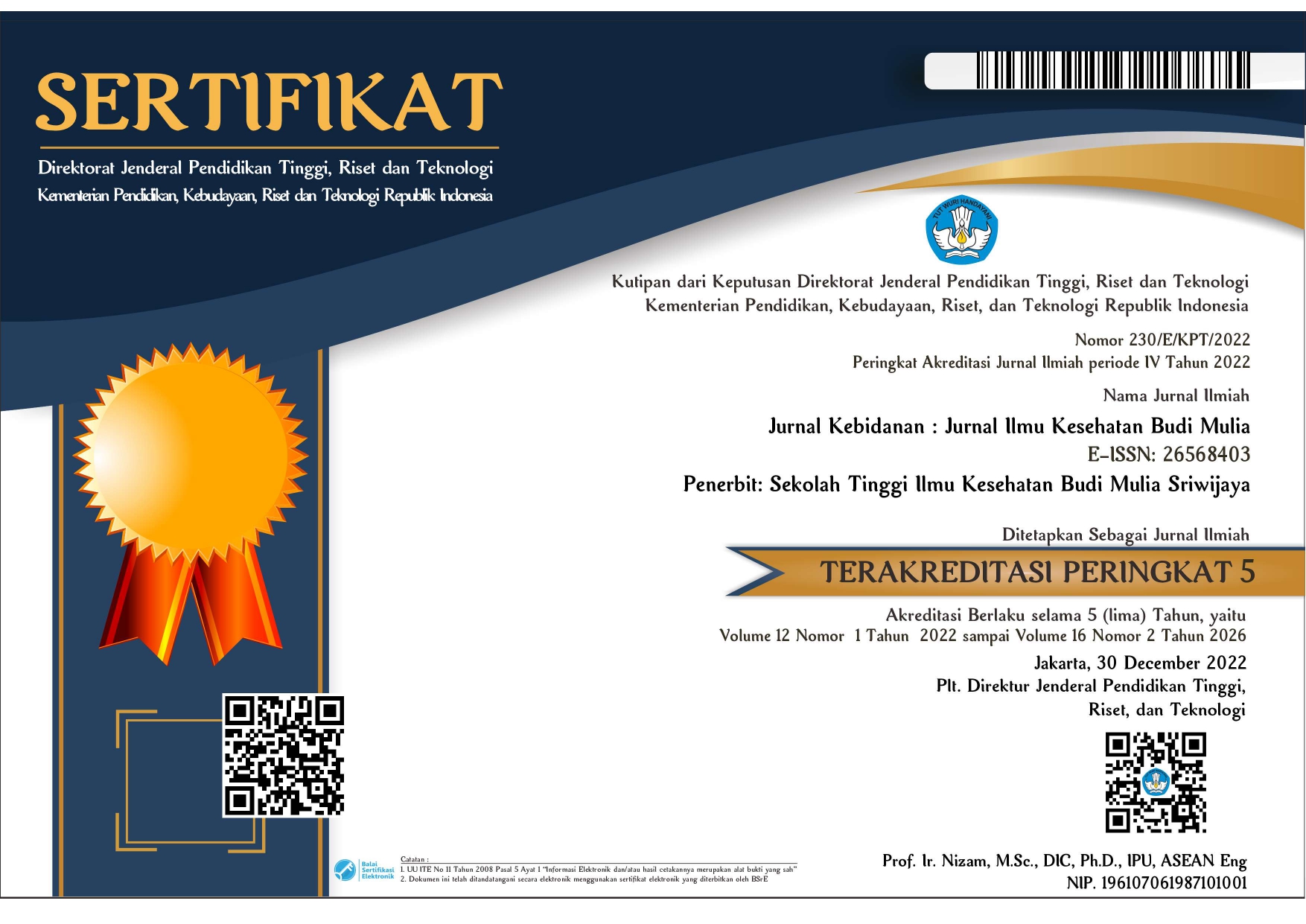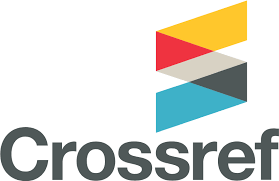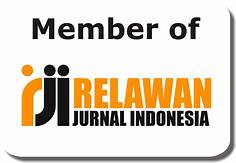HUBUNGAN ANTARA UMUR DAN PARITAS AKSEPTOR DENGAN PENGGUNAAN ALAT KONTRASEPSI IMPLANT DI KLINIK BUDI MULIA MEDIKA PALEMBANG TAHUN 2013
Abstract
ABSTRACT
Family planning (KB) is an attempt by humans to regulate intentional pregnancies in the family is not against the law and moral pancasila for family welfare. National family planning programs have an important contribution in improving the quality of teachers, the national family planning program contributions can be seen in the implementation of Making Pregnancy Safer program. Factors associated with the use of contraceptive implants among others, the level of education, knowledge, family income, parity, etc.. The purpose of this study was to determine the relationship between age and parity acceptor with the use of contraceptive implants in Clinical Budi Mulia Medika Palembang in 2013. Survey research design was cross sectional analytic approach in which the independent variables (age and parity acceptor) and the dependent variable (Implant Contraceptive Use) collected at the same time. The study population was all active acceptors in Clinical Budi Mulia Medika Palembang in 2013, and taken by random sampling with a sample of 325 respondents. Results Univariate analysis showed contraceptive implant acceptors with the acceptor 80 (24,6%) is smaller than the 245 acceptors not (75,4%), higher age is an acceptor with an 147 acceptor (45,2%) is smaller than the acceptor with lower age 178 acceptor (54,8%) and acceptors with high risk parity is 154 acceptors (47,4%), smaller than the acceptor to lower that risk parity acceptor 171 (52,6%). From the test results obtained chi square statistic There is a relationship between age acceptor with implant contraceptive use, where p Value = 0.008 is smaller than a = 0.05, and There is a relationship between parity acceptor with implant contraceptive use, where p Value = 0,030 more smaller than a = 0.05. From the research results, the researchers suggest early age efforts to maternal health and pregnancy and improve the quality of health services in order to increase the use of family planning implants.
ABSTRAK
Keluarga Berencana (KB) adalah suatu upaya yang dilakukan manusia untuk mengatur secara sengaja kehamilan dalam keluarga secara tidak melawan hukum dan moral pancasila untuk kesejahteraan keluarga.Program keluarga berencana nasional mempunyai kontribusi penting dalam upaya meningkatkan kualitas pendidik, kontribusi program keluarga berencana nasional tersebut dapat dilihat pelaksanaan program Making Pregnancy Safer. Faktor-faktor yang berhubungan dengan pemakaian alat kontrasepsi implant antara lain tingkat pendidikan, pengetahuan, pendapatan keluarga, paritas, umur, dsb. Tujuan penelitian ini adalah untuk mengetahui Hubungan antara Umur dan Paritas akseptor dengan penggunaan alat kontrasepsi Implant di Klinik Budi Mulia Medika Palembang tahun 2013. Desain penelitian ini adalah survey analitik dengan pendekatan cross sectional dimana variabel independen (Umur dan Paritas akseptor) maupun variabel dependen (Penggunaan Alat Kontrasepsi Implant) dikumpulkan dalam waktu yang bersamaan. Populasi penelitian ini adalah seluruh akseptor KB aktif di Klinik Budi Mulia Medika Palembang pada tahun 2013, dan diambil secara Random Sampling dengan jumlah sampel 325 responden. Hasil analisis univariat menunjukkan Akseptor dengan pemakaian kontrasepsi implant yaitu 80 akseptor (24,6%) lebih kecil dibandingkan tidak yaitu 245 akseptor (75,4%), akseptor dengan umur tua yaitu 147 akseptor (45,2%) lebih kecil dibandingkan akseptor dengan umur muda yaitu 178 akseptor (54,8%) dan akseptor dengan paritas resiko tinggi yaitu 154 akseptor (47,4%), lebih kecil dibandingkan akseptor dengan paritas resiko rendah yaitu 171 akseptor (52,6%). Dari hasil uji statistik chi square didapatkan Ada hubungan antara Umur akseptor dengan penggunaan alat kontrasepsi Implant, dimana p Value = 0,008 lebih kecil dari a = 0,05, dan Ada hubungan antara paritas akseptor dengan penggunaan alat kontrasepsi Implant, dimana p Value = 0,030 lebih kecil dari a = 0,05. Dari hasil penelitian, peneliti menyarankan upaya-upaya penyuluhan dini kesehatan dan kehamilan kepada ibu dan meningkatkan mutu pelayanan kesehatan guna meningkatkan penggunaan KB Implant.











